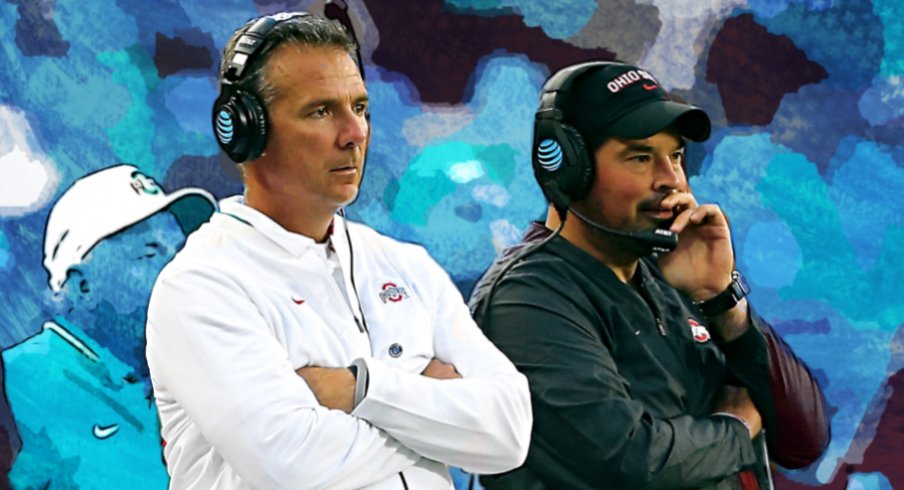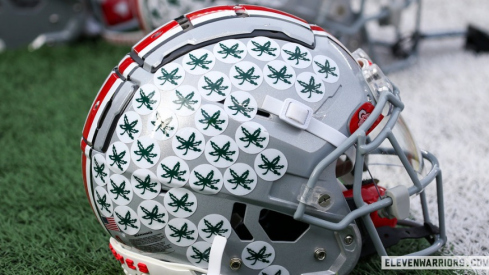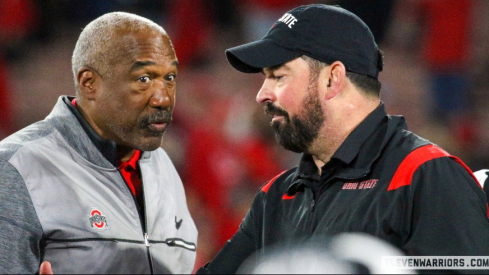Forty years ago Earle Bruce inherited a roster full of guys who had signed up to play football for someone else.
Earle had returned to the alma mater he tried to drop out of as a student 28 seasons earlier when his re-injured knee ended his playing career. He had to appreciate what his inherited roster was experiencing back in 1979, because he had been in the same orphaned predicament 28 years earlier.
He too had come to Ohio State to play for someone else. Wes Fesler, who had recruited him out of Maryland, had slipped out of Columbus following the Snow Bowl debacle - despite only being one season removed from a Rose Bowl victory and having the reigning Heisman winner (!) with eligibility let to burn. It surprised everyone, including Earle.
Until last December, Fesler was the most recent Buckeye head coach to leave on his own terms, citing the negative impact coaching at Ohio State had on his health as the reason. Yeah, hold that thought for a few paragraphs.
Fesler was no longer on campus and Earle's knee didn't allow him to play anymore, so he figured there was no reason stick around Columbus either - except that Fesler's replacement eventually convinced him to stay, and 28 years later Earle returned to Ohio State - again - to take over for the man who told him he shouldn't leave.
First-year coach Woody Hayes gave his hobbled halfback his entry into coaching while he was still tethered to undergrad, leading a roster full of players just like him who had signed up to play football for someone else. Woody's final team in 1978 had signed up to play for him; it just hadn't signed up to go 7-4-1. And following the punch, Woody left campus for Upper Arlington.
So Earle returned from Ames to lead Woody's guys 28 years later. They were Gator Bowl runners-up and unwilling participants in one of the least dignified events in televised college football history. The new coach none of them had signed up to play for promptly led them to an undefeated regular season while bringing what is still the most recent Big Ten Coach of the Year award to Ohio State.
For the first time in generations, crisis management isn't the first order of business. And learning who the guys are isn't second.
The 1979 Buckeyes came within a point of winning the Rose Bowl and a national championship in what followed a comprehensively mediocre season. It's amazing what fresh leadership is capable of doing with Ohio State-grade talent. Fesler's burnout might have been hasty, but it was a foregone conclusion; this job always does that do its occupants. Woody, the prince of longevity, was already fading away before he abruptly burned out.
Twenty-two seasons after Year One Post-Woody, Jim Tressel - who had accepted his final assistant coach offer from Earle - returned to Columbus to inherit a roster full of players who had signed up to play football for Earle's successor. His first team didn't go to Pasadena that January, but his second one made it to Tempe.
And both of them beat Michigan, which was something that had not happened in successive seasons going all the way back to when Earle was still operating with Woody's players.
Tressel's second roster may have been dominated by John Cooper's recruits, but that 14-0 run was powered by what the new guy brought to town. Urban Meyer took nearly two seasons to finally lose a game in Columbus, inheriting Tressel's roster - dozens of players who had signed up to play football for someone else.
Urban cited the same reasons Fesler did for walking away from the job. Woody's predecessor left to take over at Minnesota (which might have been more prestigious at the time?) while Urban is still both local and actively involved in university events.
This gives Ryan Day, whose previous office was already in the same building, an unprecedented situation in Ohio State football history. For the first time in generations, crisis management isn't the first order of business. And learning who the guys are isn't second.
The starting inside linebacker Earle inherited from Woody in 1979 was Al Washington; Day hired his son away from Michigan during his first week on the job, along with Greg Mattison whose first year at Michigan coincided with Brady Hoke going 11-2 with Rich Rodriguez's roster. There's plenty of first-year threads in this tapestry, including a sky's-the-limit second-year quarterback arriving to lead the latest Year One.
Room for improvement is both hard to come by and clearly visible under the fresh and yet familiar leadership that is inheriting Ohio State-grade talent. Extend the regional dynasty. Maintain the dominance over Michigan. Finish higher than 5th in the final polls. Win road games against the B1G West.
Do literally everything better than everyone else, the same standard Fesler was held to 68 seasons ago and that everyone before and since him have been handed. Day enters a unique window at the outset of his tenure where his predecessors have found historic success with their inheritance.
If he succeeds, he'll enter what's proven to be a more difficult phase: Winning it all with his own guys. And that hasn't happened since Woody did it without the help of any guys who signed up to play football for someone else.



